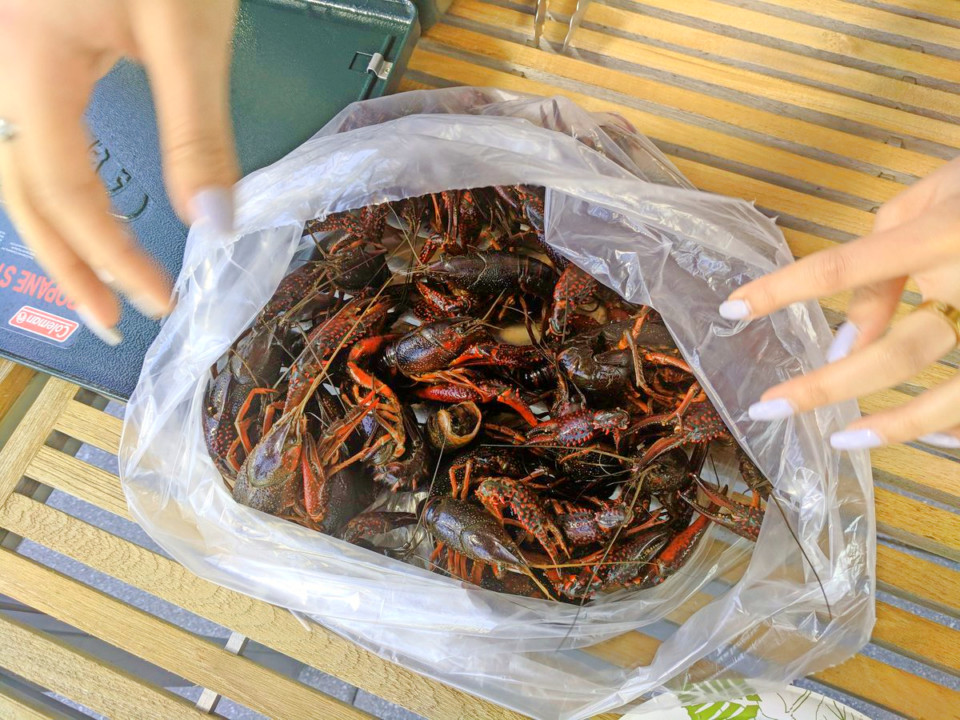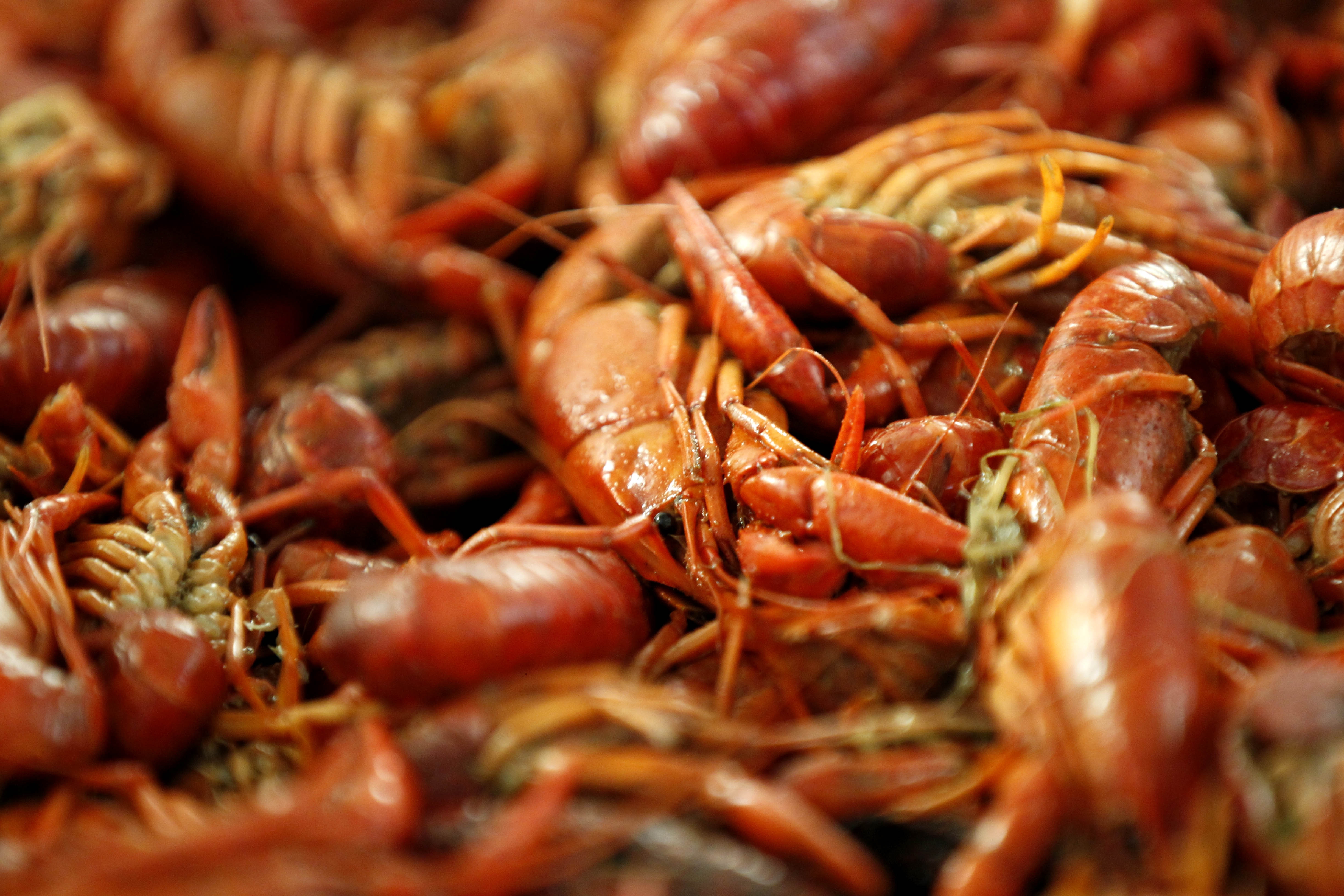In China, crayfish is called xiao lóngxiā (小龙虾), or “little lobster”. In the U.S., you might hear crawfish called “crawdads” or “mud bugs”. But in both countries, you’ll find these crustaceans have quite the following.
You read that right: you can call them crayfish or crawfish. Both spellings are correct. Crayfish is the standard name, but crawfish is the common pronunciation in the American South.
So while Chinese dishes with the crustacean will often refer to “crayfish”, most Americans dishes will refer to “crawfish”.
But whether you’re in China’s Crayfish Town of Xuyi County, or at a crawfish boil in the U.S. state of Louisiana, this little lobster is working to bridge the cultural divide through a bit of gastrodiplomacy.
The only thing that changes in the East versus the West is the way it’s cooked.
In this special edition of the Digital Hub, CGTN’s Audrey Siek and Jim Spellman teamed up for a crayfish cook off, comparing Chinese versus American recipes.
What would a little lobster cook off be without some fresh crayfish?
These two hungry reporters made an early morning stop at the best place in town to pick up live crayfish: the D.C. Wharf. As it turned out, there was one thing both recipes had in common: use live crayfish.

Reporters Jim Spellman and Audrey Siek grab crayfish from Captain White’s fish market at the D.C. Wharf. (Photo Credit: Isbella Diaz)
But why did our reports go to a fish market?
These markets are a must in both China and the U.S. when preparing authentic, seafood dishes. China’s coastal cities are abundant with fish markets, selling everything from crayfish to soft-shell turtles. The U.S. East Coast is home to the Chesapeake Bay and a host of fish markets. The fisheries of the bay’s bordering state of Maryland are particularly well known for their blue crabs, lobsters and, you guessed it, crawfish.

Live crawfish for sale at Captain White’s fish market at the D.C. Wharf. (Photo Credit: Isbella Diaz)
Once the fun of finding the live critters was over, Siek and Spellman headed back to our D.C. headquarters to start cooking.
On the menu for Siek: Sichuan Mala Crayfish. Spellman opted for a more southern approach with an Old Bay Crawfish Boil.
Let’s take a look at their prep and the recipes.
A Taste of Sichuan
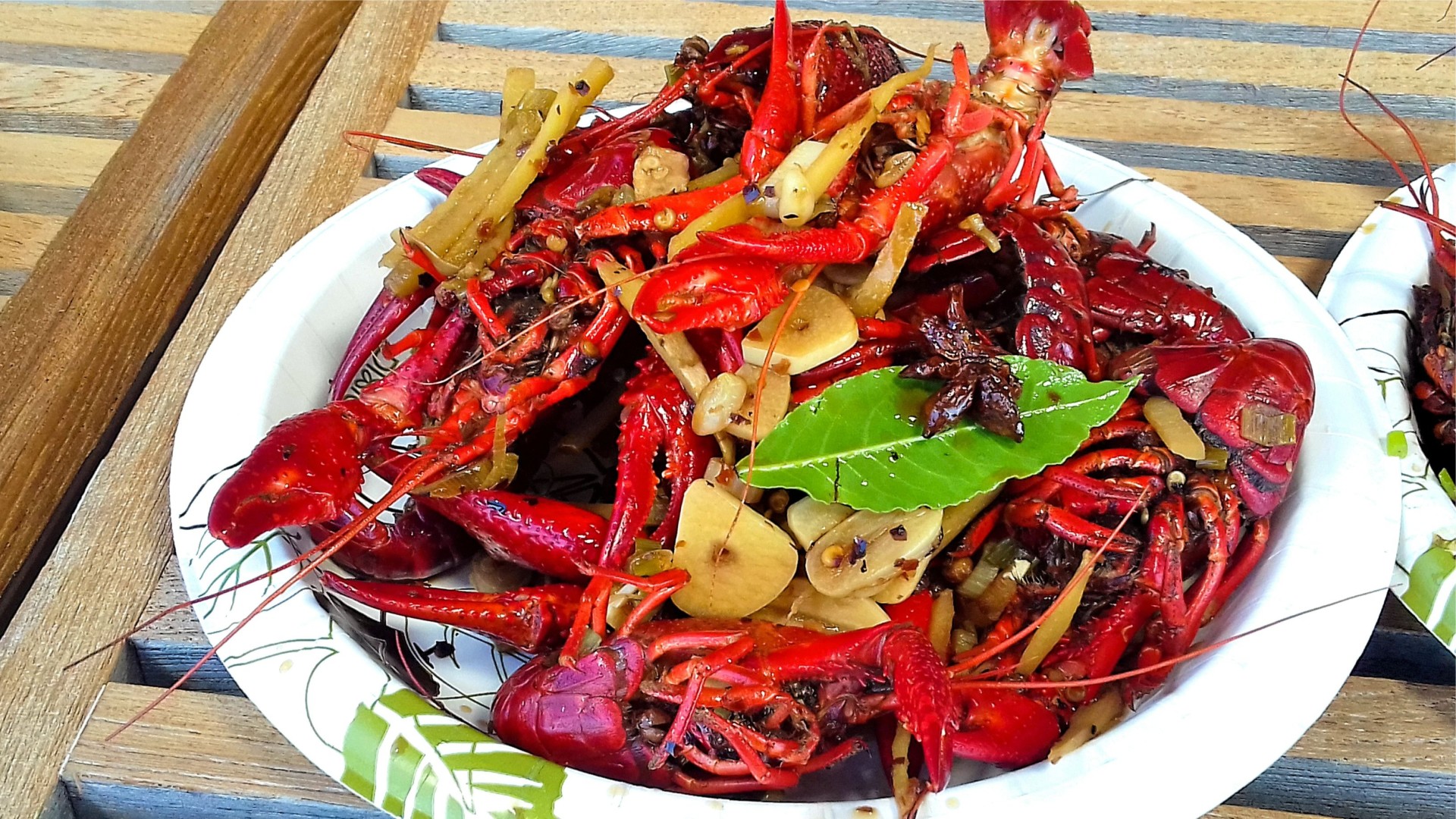
Audrey Siek’s Sichuan Mala Crayfish dish (Photo Credit: Isbella Diaz)
The Chinese recipe for crayfish stands out because of its long list of ingredients. Serving and eating crayfish in China has less to do with the side dishes, and more to do with the sauces and spices you marinate your little lobsters in.
Siek’s recipe calls for garlic, soy sauce and Chinese cooking wine, among other things. But the magic ingredient in this mala dish: the spicy, Sichuan peppercorns.
Audrey’s Sichuan Mala Crayfish
Ingredients:
* 2 pounds of crayfish
* 10 cloves garlic (chopped)
* 1 bay leaf
* 2 star anise
* spring onion (chopped)
* 5 slices of ginger
* 2 tablespoons of soy sauce
* 2 tablespoons of cooking oil
* 1/2 teaspoon of sesame oil
* 2-3 tablespoons of chili flakes
* 1 tablespoon of Sichuan peppercorns
* 1/2 cup of water
* Chinese cooking wine (amount varies)
* salt to taste
Directions:
1) Soak live crayfish in cold water with salt for a half hour.
2) Rinse over with cold running water until clean.
3) Heat up wok with cooking oil.
4) Add in garlic cloves, ginger, spring onions. Stir fry until fragrant and remove from wok.
5) Add sesame oil, chili oil, bay leaf, star anise & Sichuan peppercorns until spicy and aromatic.
6) Add garlic-ginger-spring onion mixture back into wok.
7) Toss in crayfish and cup of water. Cover wok for 5 minutes.
8) Dish out, serve hot, eat and enjoy!
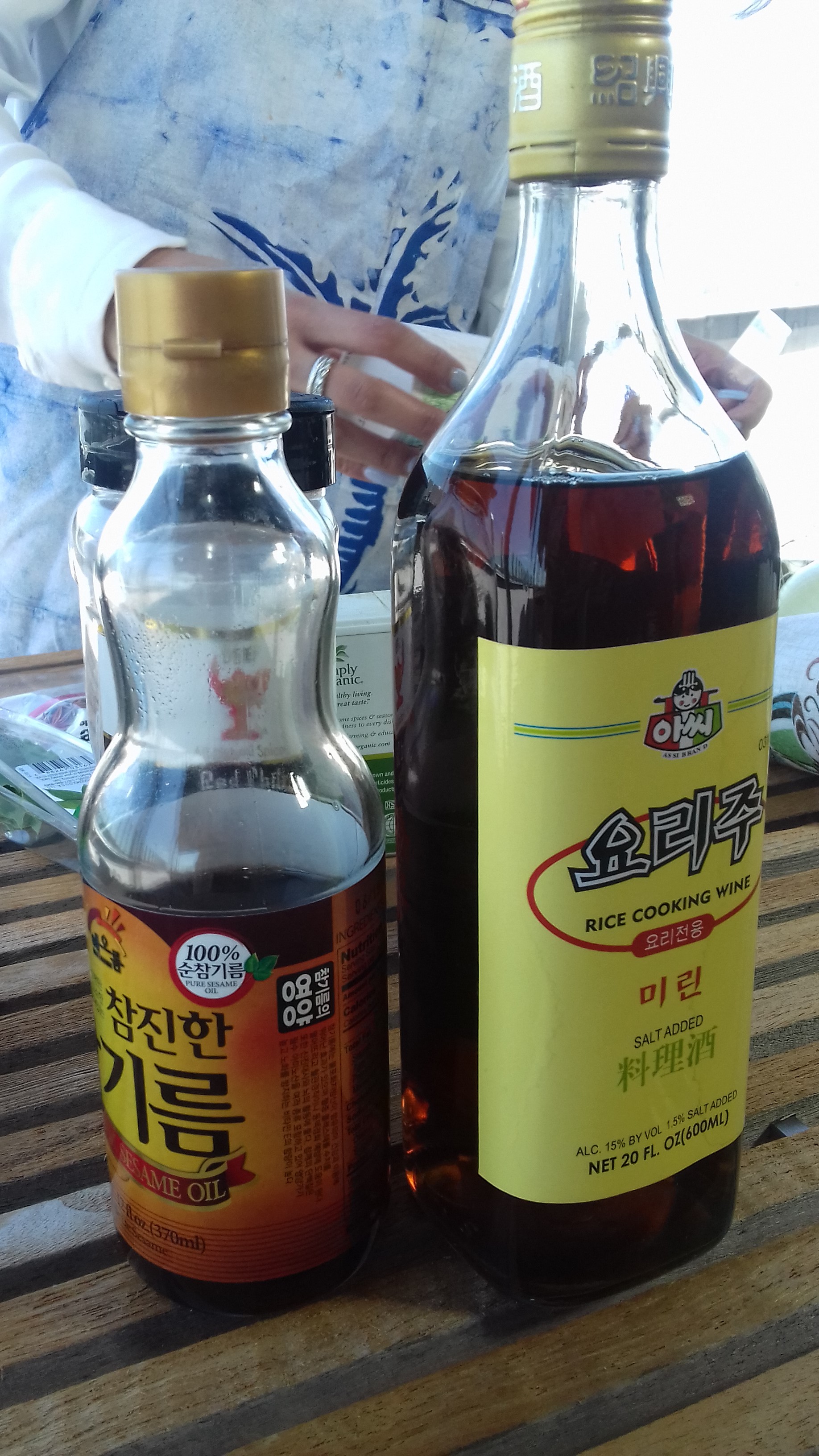
The Sichuan Mala Crayfish recipe requires a long list of spices and ingredients, including (L) Chinese sesame oil and (R) rice cooking wine. (Photo Credit: Isbella Diaz)
A Bite from the Bay
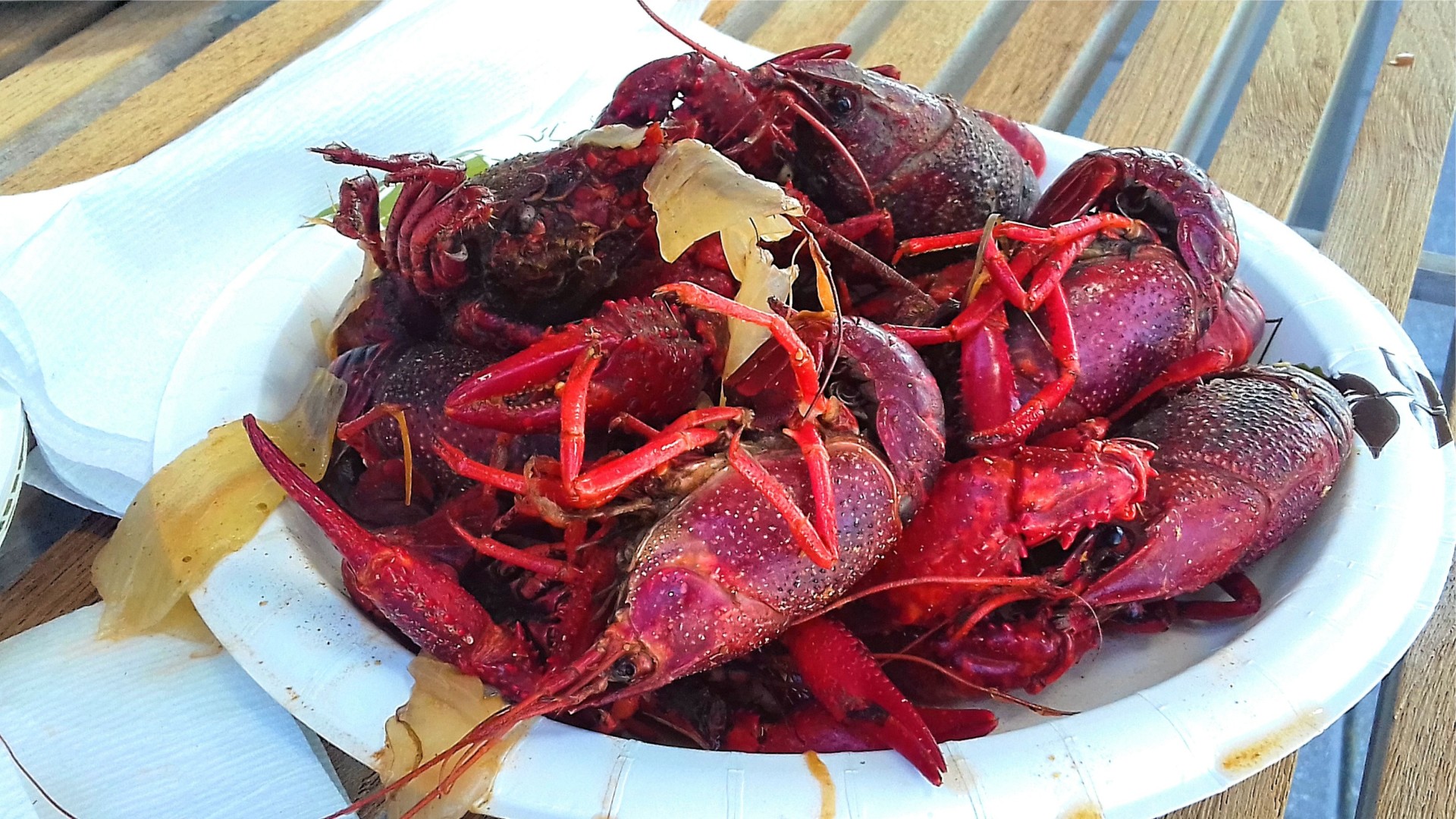
Jim Spellman’s Old Bay Crawfish dish (Photo Credit: Isbella Diaz)
The American recipe for crawfish takes a very different approach to seafood cooking. Spellman’s crawfish boil focuses on one, special spice from his home state of Maryland: Old Bay. This spice helps flavor not only the crawfish, but red-skinned potatoes and fresh corn that are thrown in the pot along with the crawdads.
The crawfish boil may be the simpler of the two recipes, but its definitely a lot heartier than the Chinese dish. Once soaked in the flavors of onion and Old Bay, the potatoes and corn serve as substantial sides.
Jim’s Old Bay Crawfish Boil
Ingredients:
* 2 pounds crawfish
* 2 large onions (cut into wedges)
* 8 medium red potatoes (quartered)
* 8 ears of fresh corn (shucked & halved)
* 6 ounces of Old Bay seasoning
* 2 tablespoons of salt
* 16 cups of water
Directions:
1) Mix water and Old Bay seasoning with salt in 12-quart stockpot. Bring to boil on high heat.
2) Add potatoes and onions to mix. Cook for 8 minutes.
3) Add corn to mix. Cook for 7 minutes.
4) Add in live crawfish. Cook until bright red.
5) Drain pot and pour contents into large serving bowl or platter. Can also use tongs to take out and separate potatoes and corn from crawfish to serve.
6) Sprinkle crawfish with additional Old Bay (if desired).
7) Dish out, serve hot, eat and enjoy!
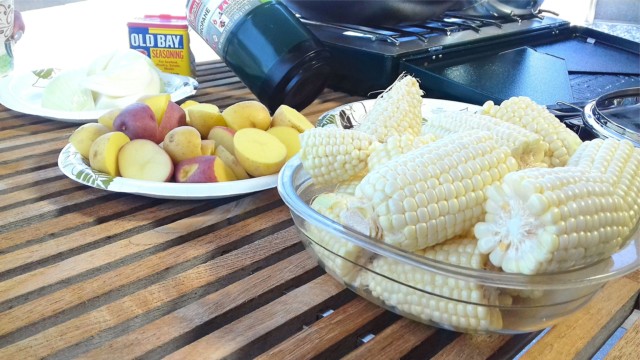
A Southern crawfish boil calls for more vegetables than the Chinese Mala recipe. They include onions for seasoning, as well as red-skinned potatoes and corn for tasty crawfish sides. (Photo Credit: Isbella Diaz)

Reporter Jim Spellman holds up a crawfish before the cook off begins. (Photo Credit: Lisa Chiu)
What Makes This Little Lobster So Popular?
So what’s led to the crayfish following that’s bridging cultures from the fish markets of Beijing to the U.S. Chesapeake Bay?
CGTN’s Audrey Siek and Jim Spellman team up once again to explain in this digital short.
Story edited by Isbella Diaz.
 CGTN America
CGTN America